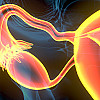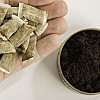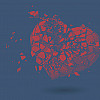Recent Blog Articles

Lead poisoning: What parents should know and do

How does waiting on prostate cancer treatment affect survival?

Does running cause arthritis?

Is alcohol and weight loss surgery a risky combination?

Preventing ovarian cancer: Should women consider removing fallopian tubes?

Healthier planet, healthier people

Is snuff really safer than smoking?

Will miscarriage care remain available?

Considering collagen drinks and supplements?

Does less TV time lower your risk for dementia?
Febrile Seizures
What Is It?
Febrile seizures occur in children. They are caused by a high fever or by a sudden rise in body temperature. These seizures usually happen at the beginning of an illness, soon after the fever first starts. Febrile seizures affect about 3-5 percent of children. They are most common between ages 6 months and 5 years.
What is a seizure? The brain's nerve cells (neurons) communicate with each other by giving off tiny electric signals. When someone has a seizure (convulsion), the way the brain's nerve cells give off signals suddenly changes, causing different muscles in the body to twitch or jerk uncontrollably.
To continue reading this article, you must log in.
Subscribe to Harvard Health Online for immediate access to health news and information from Harvard Medical School.
- Research health conditions
- Check your symptoms
- Prepare for a doctor's visit or test
- Find the best treatments and procedures for you
- Explore options for better nutrition and exercise
I'd like to receive access to Harvard Health Online for only $4.99 a month.
Sign Me UpAlready a member? Login ».
Disclaimer:
As a service to our readers, Harvard Health Publishing provides access to our library of archived content. Please note the date of last review or update on all articles.
No content on this site, regardless of date, should ever be used as a substitute for direct medical advice from your doctor or other qualified clinician.
Free Healthbeat Signup
Get the latest in health news delivered to your inbox!
